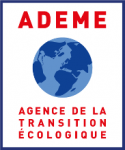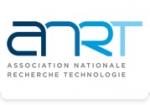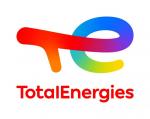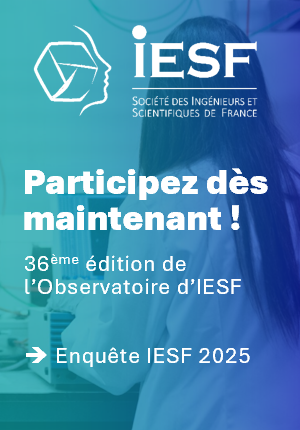Rôle du canal ionique hERG1 dans les syndromes myélodysplasiques // Role of the hERG1 ion channel in myelodysplastic syndromes
|
ABG-131292
ADUM-63391 |
Sujet de Thèse | |
| 19/04/2025 | Contrat doctoral |
Université de Picardie - Jules Verne
Amiens - France
Rôle du canal ionique hERG1 dans les syndromes myélodysplasiques // Role of the hERG1 ion channel in myelodysplastic syndromes
- Biologie
Syndromes myélodysplasique, Canal ionique, hERG1, Mutations de SF3B1
Myelodysplastic syndromes, Ion channel, hERG1, SF3B1 mutations
Myelodysplastic syndromes, Ion channel, hERG1, SF3B1 mutations
Description du sujet
Le rôle des canaux ioniques dans les hémopathies malignes est peu exploré contrairement aux cancers solides, où leur expression est associée à des caractéristiques majeurs de la tumeur (prolifération, angiogénèse, migration et invasion). Les syndromes myélodysplasiques (SMD) sont des pathologies pré-leucémiques, caractérisées par une hématopoïèse inefficace et un défaut de production des cellules matures. Au niveau transcriptomique, le canal hERG1 est surexprimé dans les SMD de faible risque, notamment dans les SMD caractérisés par une mutation du gène SF3B1 et cette surexpression semble associée à une meilleure survie globale. Le gène KCNH2, codant pour ce canal ionique, est exprimé de façon homogène dans les cellules hématopoïétiques avec néanmoins une légère surexpression dans la lignée érythropoïétique. L'objectif principal de ce travail est l'étude précise de l'expression de hERG1 au cours de l'érythropoïèse normale et pathologique dans les SMD mutés SF3B1 mais également au décours de la myélopoïèse (granulopoïèse et monocytopoïèse) par cytométrie en flux, grâce à des panels connus et bien caractérisés. Dans un deuxième temps, l'étude des conséquences fonctionnelles de l'expression de hERG1 sera envisagée, par des expériences de flux calcique et de patch clamp. En parallèle, des données de RNA sequencing sont disponibles chez des patients avec SMD de faible et haut risque. Leur exploitation permettra une meilleure compréhension du rôle de ce canal dans les SMD, ouvrant la voie à de nouvelles expériences.
------------------------------------------------------------------------------------------------------------------------------------------------------------------------
------------------------------------------------------------------------------------------------------------------------------------------------------------------------
The role of ion channels in haematological malignancies is little explored, unlike in solid cancers, where their expression is associated with major tumour characteristics (proliferation, angiogenesis, migration and invasion). Myelodysplastic syndromes (MDS) are pre-leukaemic diseases characterised by inefficient haematopoiesis and a defect in the production of mature cells. At transcriptomic level, the hERG1 channel is over-expressed in low-risk MDS, particularly in MDS characterised by a mutation in the SF3B1 gene, and this over-expression appears to be associated with better overall survival. The KCNH2 gene, encoding this ion channel, is homogeneously expressed in haematopoietic cells, with a slight overexpression in the erythropoietic lineage. The main objective of this work is to study the precise expression of hERG1 during normal and pathological erythropoiesis in SF3B1-mutated MDS, as well as during myelopoiesis (granulopoiesis and monocytopoiesis) by flow cytometry, using known and well-characterised panels. Secondly, the functional consequences of hERG1 expression will be studied using calcium flow and patch clamp experiments. In parallel, RNA sequencing data are available from patients with low- and high-risk MDS. Using these data will provide a better understanding of the role of this channel in MDS, paving the way for new experiments.
------------------------------------------------------------------------------------------------------------------------------------------------------------------------
------------------------------------------------------------------------------------------------------------------------------------------------------------------------
Début de la thèse : 01/10/2025
------------------------------------------------------------------------------------------------------------------------------------------------------------------------
------------------------------------------------------------------------------------------------------------------------------------------------------------------------
The role of ion channels in haematological malignancies is little explored, unlike in solid cancers, where their expression is associated with major tumour characteristics (proliferation, angiogenesis, migration and invasion). Myelodysplastic syndromes (MDS) are pre-leukaemic diseases characterised by inefficient haematopoiesis and a defect in the production of mature cells. At transcriptomic level, the hERG1 channel is over-expressed in low-risk MDS, particularly in MDS characterised by a mutation in the SF3B1 gene, and this over-expression appears to be associated with better overall survival. The KCNH2 gene, encoding this ion channel, is homogeneously expressed in haematopoietic cells, with a slight overexpression in the erythropoietic lineage. The main objective of this work is to study the precise expression of hERG1 during normal and pathological erythropoiesis in SF3B1-mutated MDS, as well as during myelopoiesis (granulopoiesis and monocytopoiesis) by flow cytometry, using known and well-characterised panels. Secondly, the functional consequences of hERG1 expression will be studied using calcium flow and patch clamp experiments. In parallel, RNA sequencing data are available from patients with low- and high-risk MDS. Using these data will provide a better understanding of the role of this channel in MDS, paving the way for new experiments.
------------------------------------------------------------------------------------------------------------------------------------------------------------------------
------------------------------------------------------------------------------------------------------------------------------------------------------------------------
Début de la thèse : 01/10/2025
Nature du financement
Contrat doctoral
Précisions sur le financement
Concours pour un contrat doctoral
Présentation établissement et labo d'accueil
Université de Picardie - Jules Verne
Etablissement délivrant le doctorat
Université de Picardie - Jules Verne
Ecole doctorale
585 Sciences, Technologie, Santé
Profil du candidat
Doctorant ayant des compétences en cytométrie en flux, culture cellulaire (cellules primaires CD34+, shRNA), techniques scientifiques usuelles (Western Blot, qPCR). Autonomie, curiosité, motivation et travail en équipe indispensables.
PhD student with skills in flow cytometry, cell culture (primary CD34+ cells, shRNA), standard scientific techniques (Western Blot, qPCR). Autonomy, curiosity, motivation and teamwork essential.
PhD student with skills in flow cytometry, cell culture (primary CD34+ cells, shRNA), standard scientific techniques (Western Blot, qPCR). Autonomy, curiosity, motivation and teamwork essential.
01/06/2025
Postuler
Fermer
Vous avez déjà un compte ?
Nouvel utilisateur ?
Besoin d'informations sur l'ABG ?
Vous souhaitez recevoir nos infolettres ?
Découvrez nos adhérents
 Laboratoire National de Métrologie et d'Essais - LNE
Laboratoire National de Métrologie et d'Essais - LNE  Généthon
Généthon  ADEME
ADEME  CASDEN
CASDEN  Ifremer
Ifremer  MabDesign
MabDesign  CESI
CESI  ONERA - The French Aerospace Lab
ONERA - The French Aerospace Lab  MabDesign
MabDesign  SUEZ
SUEZ  ANRT
ANRT  PhDOOC
PhDOOC  Tecknowmetrix
Tecknowmetrix  Aérocentre, Pôle d'excellence régional
Aérocentre, Pôle d'excellence régional  Nokia Bell Labs France
Nokia Bell Labs France  TotalEnergies
TotalEnergies  Groupe AFNOR - Association française de normalisation
Groupe AFNOR - Association française de normalisation  ASNR - Autorité de sûreté nucléaire et de radioprotection - Siège
ASNR - Autorité de sûreté nucléaire et de radioprotection - Siège  Institut Sup'biotech de Paris
Institut Sup'biotech de Paris





